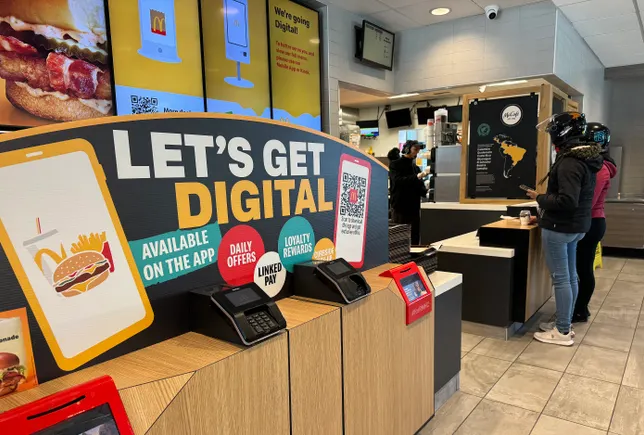If you’ve been keeping up with the ever-evolving world of advertising, you may have come across the term “OTT advertising.” But what exactly does it mean? How does it differ from traditional advertising? And why is it gaining so much traction in recent years? In this article, we’ll dive into the world of OTT advertising and explore its various aspects. Get ready to discover this exciting new way of reaching your target audience!
What is OTT Advertising?
OTT, or Over-The-Top, advertising refers to the delivery of video content through streaming services directly to consumers over the internet. It bypasses traditional television broadcast methods and provides users with access to media content on multiple devices, such as televisions, smartphones, tablets, and smart TVs. OTT advertising takes advantage of this shift in consumer behavior, allowing advertisers to reach their audience through platforms like Hulu, Netflix, Amazon Prime Video, and more.
How Does OTT Advertising Work?
OTT advertising works by leveraging the data collected from streaming platforms to target specific audiences. Advertisers can reach viewers based on demographics, interests, viewing habits, and other relevant factors. This targeted approach ensures that ads are shown to the right people at the right time, increasing the chances of conversion and engagement.
Unlike traditional television advertising, where ads are displayed during specific time slots or shows, OTT advertising utilizes programmatic advertising, which means that ads are delivered in real-time to individual viewers based on their preferences. This dynamic delivery allows for a more personalized and relevant advertising experience.
Benefits of OTT Advertising
1. Targeted Reach – OTT advertising allows you to target your audience effectively based on specific criteria such as demographics, interests, and location. This precision targeting ensures that your message reaches the right people, maximizing your advertising budget.
2. Engaging and Interactive – With OTT advertising, you can create interactive and engaging ads that capture the viewer’s attention. You can include interactive elements like call-to-action buttons, surveys, and clickable links, making it easier for viewers to engage with your brand.
3. Measurable Results – OTT advertising provides detailed analytics and metrics, allowing you to track your campaign’s performance in real-time. You can monitor impressions, reach, engagement, and even conversion rates, enabling you to optimize your ads for better results.
4. Cost-effective – Unlike traditional television advertising, which often requires a significant investment, OTT advertising can be more cost-effective. With the ability to target a specific audience and track the performance of your ads, you can optimize your budget and ensure that you’re getting the most out of your advertising efforts.
Challenges of OTT Advertising
While OTT advertising has many benefits, it also comes with certain challenges that advertisers need to be aware of:
1. Ad-blocking – As streaming platforms become more popular, so does the use of ad-blocking technology. Many viewers use ad-blockers to skip or avoid advertisements, reducing the reach and effectiveness of OTT advertising.
2. Fragmentation – The OTT landscape is highly fragmented, with numerous streaming platforms and devices available. Advertisers need to navigate this fragmented ecosystem to reach their desired audience effectively.
3. Limited Inventory – Unlike traditional television, OTT advertising has limited ad inventory. With more advertisers looking to tap into the power of OTT, competition for ad space can be fierce.
4. Ad Fatigue – OTT viewers are increasingly becoming fatigued by ad interruptions. Advertisers need to find creative ways to engage viewers and provide a seamless advertising experience.
OTT Advertising Best Practices
To make the most of your OTT advertising efforts, keep these best practices in mind:
1. Compelling and Relevant Content – Create ads that are engaging, informative, and relevant to your target audience. Use storytelling techniques to capture viewers’ attention and ensure that your message resonates with them.
2. Optimize for Mobile – As mobile devices continue to dominate the streaming landscape, make sure your ads are optimized for mobile viewing. Consider the smaller screen size and how it may affect the viewer’s experience.
3. Test and Iterate – OTT advertising provides the advantage of real-time data and analytics. Use this data to test different ad formats, messaging, and targeting options. Continuously iterate and optimize your campaigns for better results.
4. Collaborate with Streaming Platforms – Work closely with streaming platforms to understand their audience and explore partnership opportunities. They have valuable insights that can help you refine your targeting and make your ads more effective.
In Conclusion
OTT advertising has revolutionized the way brands connect with their target audience in the digital age. With its targeted reach, engaging content, and measurable results, it offers a promising avenue for advertisers to reach their marketing goals. However, it does come with its own set of challenges. By understanding the intricacies of OTT advertising and following best practices, advertisers can make the most of this exciting advertising medium and stay ahead of the competition.












Leave a Reply